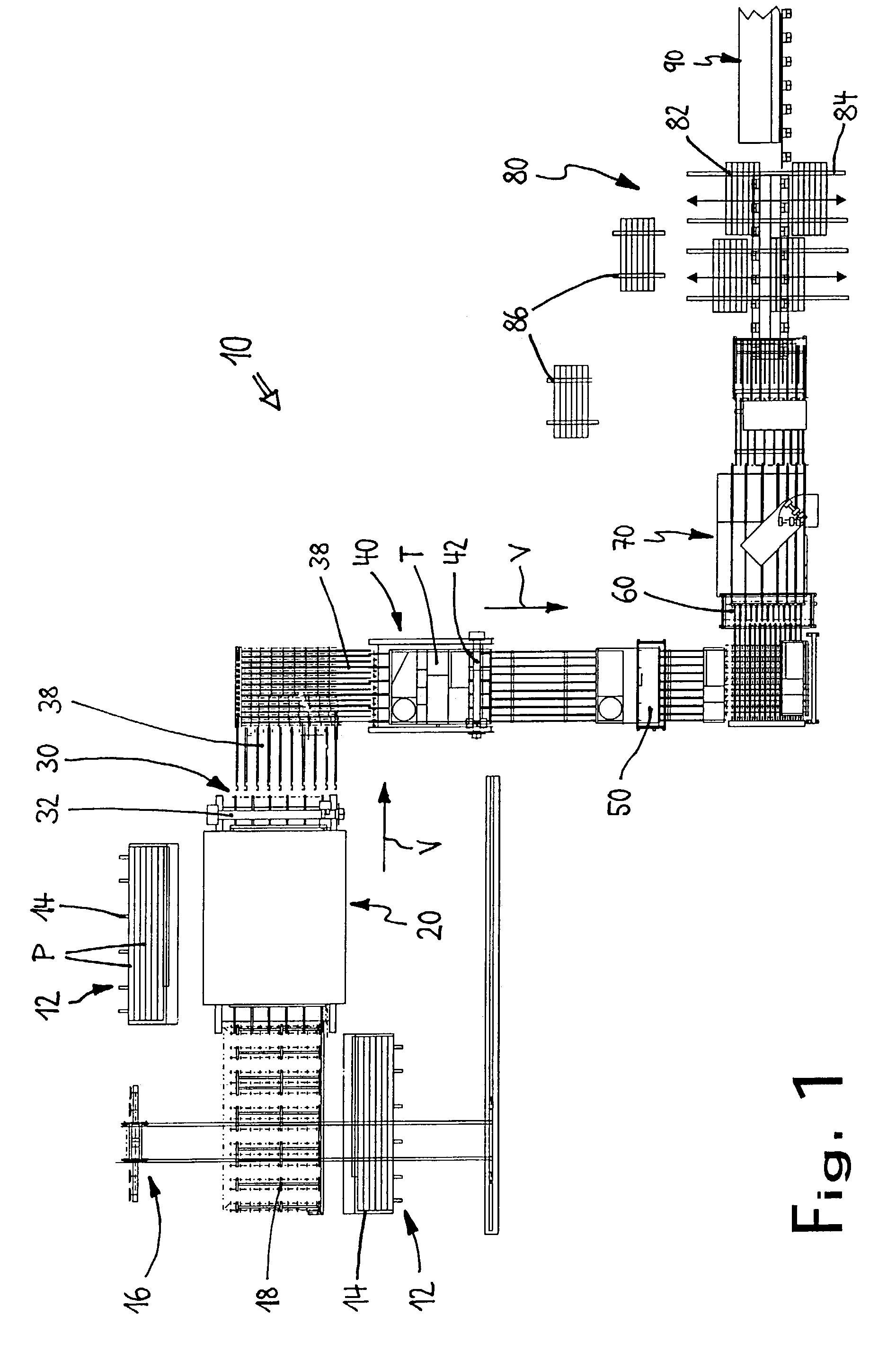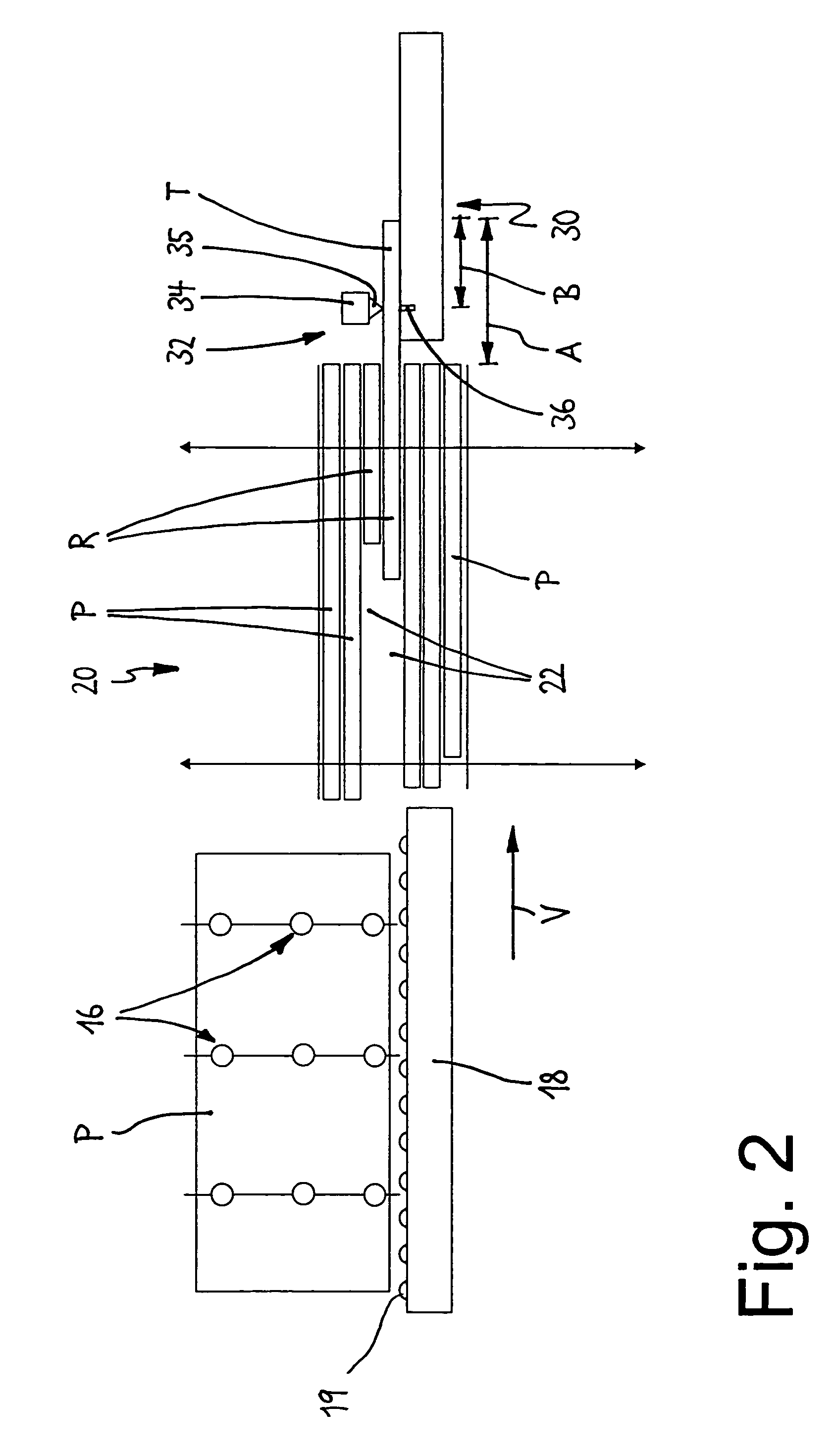Method and equipment to divide glass plates into cut pieces
a technology of glass plates and cutting pieces, applied in the direction of paper/cardboard containers, lighting and heating apparatus, containers, etc., can solve the problems of entail further processing delays, substantial drawbacks, conversion or adaptation may entail further delays, etc., and achieve the effect of reducing the transit time of different glass types very substantially
- Summary
- Abstract
- Description
- Claims
- Application Information
AI Technical Summary
Benefits of technology
Problems solved by technology
Method used
Image
Examples
Embodiment Construction
[0028]The equipment generally denoted by 10 in FIG. 1 is used to divide glass plates into cut pieces and comprises a blank-plate storage 12 loaded with blank plates P which rest in packets distinguished by material properties on A or L frames 14. Material properties illustratively mean different glass thickness, kind and design of coating or improvement, tinting, color etc. The sizes of the glass plates P are about 6,000×3,210 mm. A removal system 16, for instance a portal crane, is able to access each individual glass plate P in the plate storage 12. Said plates are picked up by omitted vacuum suction means and then are deposited consecutively and horizontally on a deposition table 18.
[0029]The plates P are moved from the deposition table 18 to an intermediate storage 20 using rollers 19. The intermediate storage is designed in magazine-like manner with several superposed receiving compartments 22. Each receiving compartment 22 is associated to a predetermined kind of glass, and up...
PUM
| Property | Measurement | Unit |
|---|---|---|
| sizes | aaaaa | aaaaa |
| area | aaaaa | aaaaa |
| thickness | aaaaa | aaaaa |
Abstract
Description
Claims
Application Information
 Login to View More
Login to View More - R&D
- Intellectual Property
- Life Sciences
- Materials
- Tech Scout
- Unparalleled Data Quality
- Higher Quality Content
- 60% Fewer Hallucinations
Browse by: Latest US Patents, China's latest patents, Technical Efficacy Thesaurus, Application Domain, Technology Topic, Popular Technical Reports.
© 2025 PatSnap. All rights reserved.Legal|Privacy policy|Modern Slavery Act Transparency Statement|Sitemap|About US| Contact US: help@patsnap.com



